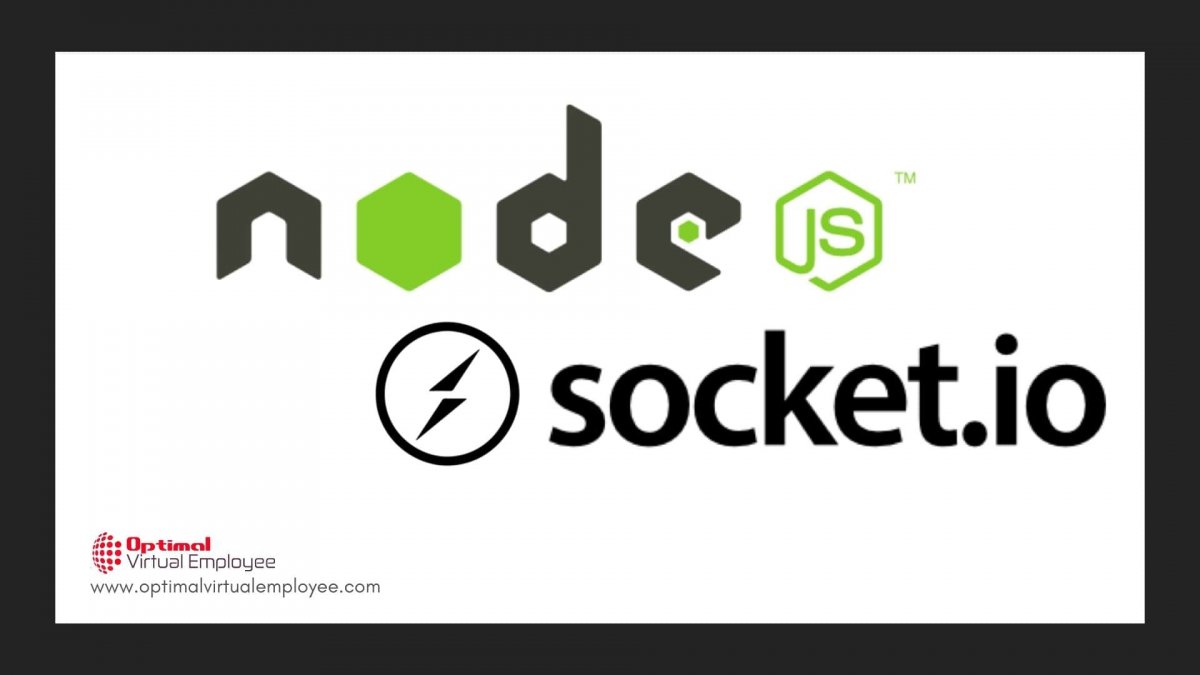As we grow to realize the value of time, software development has become all about creating efficiency for the end-user. Businesses hire software developers to build apps that can interact with target users in a real-time format. Mobile apps, desktop apps and even web apps come with real-time functions and functionalities today. It’s common for users to expect their apps to feature real-time messaging and notifications for their ease.
Node.js is undoubtedly the best programming language when it comes to building real-time apps. It’s event-driven and asynchronous in approach. Socket.io is a popular choice for real-time bidirectional communication during software development. Developers prefer socket-based communication for maximum efficiency in terms of network bandwidth instead of interval-based checking.
Here in this article, we show software developers how to build real-time apps with Node.js with real-time chat integration. The focus would be on some particular use cases which can be easily grasped to be used in other cases as need be.
-
How are Realtime Apps Different from Normal Apps?
Building an app with real-time functionalities is different from building a normal app. Apps with real-time functionalities allow users to send messages and receive notifications in real-time. It means that messages and notifications are visible on the receiver’s app as soon as they are sent. As opposed to this, a normal application initiates the client’s requests to the server to receive data, and the user has to refresh the web page regularly to see the newest messages. Alternatively, the client-side must send AJAX requests to the server in short intervals to retrieve the latest messages. Both these alternatives are either inconvenient or wasteful. To conclude, there is a need for a different method to build real-time apps.
-
Building Real-Time Notification Using Socket io and Nodejs
Real-time notifications are an indispensable function of modern apps and websites. They hold the promise of magnified engagement; businesses hire software developers to make the code precise and easily scalable. Some businesses intend to use Socket.io and Node.js to develop a real-time notification system during software development. Socket.io makes it extremely easy to build a chat client, analytics, collaborative editing, streaming and lots of real-time activities.
- Since Socket.io is a library that supports real-time operations for almost all browsers, it uses different transports for different browsers, making it possible for real-time notification systems to work everywhere. This means the entire set up will facilitate real-time notification on all the browsers using the same code. For Firefox, real-time notification can be sent using xhr, and for Chrome Websockets are used.
- Socket.io also facilitates easy reconnection of the server when a disconnection occurs from the notification area. If the software development engineers choose to use Chrome as the work area and disconnection occurs, the application raises an event that indicates that disconnect occurred. Socket.io identifies the event and utilizes the js code to deliver the notifications in real-time.
Socket.io and Node.js need very little code to implement a real-time notification system. Using Socket.io and Node. j, software developers can generate real-time notifications for specific events. Generally, Socket.io uses Google Chrome’s work area for issuing notifications. App.js server serves as the actual communication channel for the system. The server connects the end app user to the program and lets them receive the message. The node server serves message or instant notification as Socket.io is utilized. Node.js implementation is stronger than PHP code that software developers used to prefer for real-time notification system development.
It’s important to ensure that the stable version of node.js is being used during software development. Hire software developers to add security layer with node.js to prevent unauthenticated users from using WebSockets. Developers can also choose from these supporter transporters for multiple browsers:
- Adobe Flash Socket
- AJAX Long Polling
- AJAX Multipart Streaming
- Forever Iframe
- JSONP Polling
In apps where the main javascript file is server.js, it can also be used as the bootstrapping file. If the implementation is executed in a single file, it’s not scalable. Thus, a modular approach to implement Socket.io is much more manageable and easy to debug. Using a receiver helper module that contains a socket related method and the Socket.io helper module as an accessor module, software developers can add string value instead of generated notifications. Hire software developer to write different logic for notification authorization, classification and customization.
In the End
Real-time features are not a novelty in apps anymore but a necessity given the times we live in. Be it desktop apps, mobile apps or web apps; real-time notifications help spur the business in the right direction by increasing engagement. Real-time notifications are an important feature in social and other apps where the end-users need to be immediately aware when events they might be interested in happening. In this article, we learned how to implement real-time notifications in apps using socket.io and node.js. We hope young developers find it a useful read and implement it in their software development projects.
Looking to hire software developers? Get in touch today.









